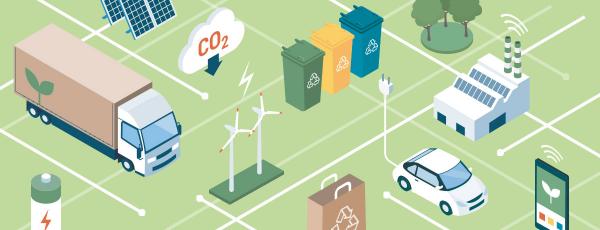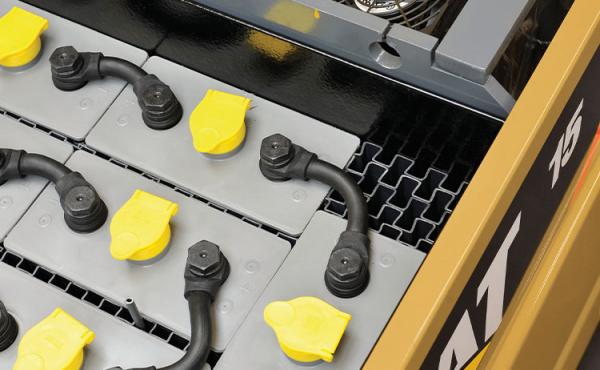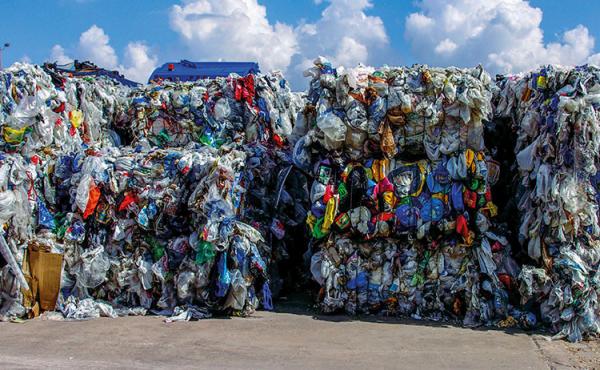Reducing waste may not always be easy but it’s both environmentally and economically rewarding in the quest to improve sustainable logistics, as Gian Schiava explains in a recent article for Eureka the online magazine for the materials handling professional.
Managing the flow of goods within a supply chain is already a hard job to do well and as margins can be thin, efficiency and productivity are difficult daily challenges for the supply chain manager. Today, however, the supply chain manager has yet another key challenge to consider – sustainable logistics. We are now more than aware that we cannot keep polluting this world and wasting its natural resources in the way we have done before. Within logistics flows we use all kinds of packaging materials, including board, paper, shrink wrap and bubble wrap. What’s more, with the increase of e-commerce transactions, we have created another powerful stream: the one for returned goods. Dealing with this involves further handling and repackaging, along with extra fuel consumption that feels somehow avoidable.
Although supply chain managers certainly can’t solve all of our planet’s problems, there are two directions in which a company can significantly reduce its environmental impacts.
Inwards: managing in-house waste
We should view waste as a source of raw materials from which new resources can be created. This is often referred to as the circular production cycle. Companies need to know how to separate their waste flows and design efficient in-house waste logistics systems to make the most of them. Dutch company KTK has been working in waste logistics for almost 30 years and offers some advice on improvement including setting up a waste logistics system well in advance.
When designing a new warehouse, we tend to focus on the primary flow of goods and overlook the waste flows. In large distribution centres, particularly, waste production can amount to several hundred cubic metres per day and cannot be efficiently processed if not considered in the initial warehouse planning. Selecting waste locations and ways of separating the flows is just as important as choosing the right forklift trucks.
Other suggestions include designing your set-up as a total concept (don’t ‘shop’ for cheap partial solutions); considering the various compacting techniques available (to reduce volume); and making sure you prevent waste from hindering your primary process. Another important message is to not forget the external logistics.
Outwards: reducing consumption in the supply chain
Sustainability within the whole supply chain is another ball game altogether. We need to look beyond reducing and recycling packaging materials, as there are other important areas that need our attention.
Improving energy and fuel efficiency, to cut carbon emissions, is our ultimate challenge. Cutting costs through more energy-efficient transport is another great incentive. Return on investment can be especially good when switching from highly polluting fossil energy sources to greener hybrid or electric alternatives.
Large logistics companies, in particular, are ready to plunge into green transport. UPS, for example, is gradually replacing its fleet with vehicles which run on alternative fuel or use advanced technology – such as hybrid power sources – that improve energy efficiency.
Excessive fuel consumption may also be the result of poor planning. Adding extra kilometres through an inefficient schedule or route is not environmentally friendly. Empty trailers on return routes are also wasting fuel. A modern transport management system (TMS) can help to optimise things like loading capacity, filling rates, staffing of the cargo space, and ensuring timely loading and unloading operations.
The list of opportunities goes on and on. Unnecessarily high amounts of stock can lead to many unnecessary movements. Poor routing systems or order picking plans can lead to preventable increases in miles driven. Conventional packaging machines, sending out packages which are partly empty, or stuffed with loads of filling material, contribute further to the waste.
Good alternatives already exist but adopting them requires research and dedication. To speed up progress in the field of sustainable logistics, one of the new roles emerging is that of the waste logistics manager. Sustainability-focused professionals are urgently needed – first for the planet and second for your business. After all, the potential for savings in this area is mind-blowing.
If you are interested in finding out more about sustainable logistics, waste logistics or recycling, visit Eureka’s section of articles on sustainability at https://eurekapub.eu/sustainability which contains a variety of interesting reads, including the following:
- The drive for more circular logistics
- The Li-ion recycling challenge
- Wrap up green for healthier profits
To read the unabridged version of this article on sustainable logistics by Gian Schiava please click here.


